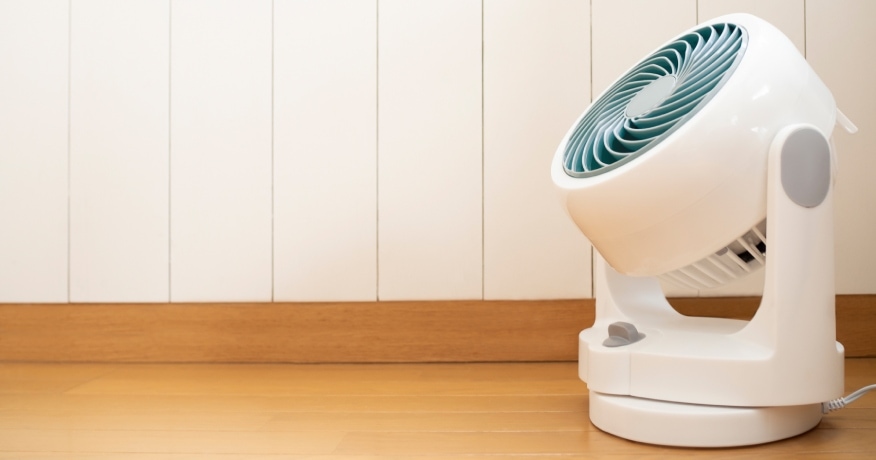Read any blog about how to stay cool in the summer, and you’ll no doubt see a subheading about air circulators. However, these articles rarely address how they work and when they’re helpful to use.
To help you understand more about the potential benefits of air circulators and get the answer to the most important question–do air circulators cool rooms? Keep reading. Below, we’ll tell you how, exactly, air circulators help keep you cool, where they should be placed for maximum relief, and how they differ from traditional fans.

Disclosure:It is important you understand that we may receive commissions when you click our links and make purchases. However, this does not impact our reviews and comparisons. All opinions are our own we pride ourselves on keeping our articles fair and balanced. For more info see our disclosure statement.
So, Do Air Circulators Cool Rooms?
No, air circulators do not actually cool rooms. In fact, they don’t change the temperature of the air at all. But these products will help you cool down.
Confused? It all has to do with moving air.
As the name suggests, air circulators are meant to move air, but not just some of the air in the room–all of it. By creating a vortex of rotating air, these specialty fans cause air pressure changes in all corners of the room that, in turn, eliminate stagnant air columns.
This air movement in all areas of the rooms creates a continuous breeze. When this breeze comes into contact with your skin, it helps cool you down using the processes of convection and evaporation.
So, while air circulators do not actually cool the air in the room, they help cool people down.
To visualize how air circulators help keep you cool, check out this video by Vornado, maker of some of the most popular air circulation devices.
Where Should Air Circulators Be Placed?
Air circulators should be placed on one side of the room and angled slightly upward toward the opposite wall for the maximum cooling effect. This angle allows the vortex of moving air to bounce off the wall at an angle, thus displacing more air.
This setup is ideal for creating a cooling breeze. The higher the fan setting, the more cooling power the fan will have.
In the winter, use your air circulator to move hot air away from the ceiling and back down toward the floor. You can accomplish this by pointing the circulator directly at the ceiling. To avoid creating too much of a breeze, ensure the fan is set to the lowest setting.
Is There A Difference Between An Air Circulator And A Fan?
Yes, there is a big difference between personal fans and an air circulator. Fans work by pushing the air directly in front of them while air circulators create a vortex that causes all the air in the room to move.
To keep cool with a fan, you have to be standing directly in front of or below the device. When standing still in a relatively large area, such as outside, having a fan trained on you may be the best way to keep cool.
On the other hand, air circulators create a breeze that can be felt throughout the room, making them an excellent choice for rooms with multiple people and for times when you want to stay cool but can’t stand in one place.
Bottom Line on Air Circulators
Air circulators may not actually cool down the room or the air itself, but they are still an excellent tool for helping you beat the heat. By creating a constant breeze and eliminating stagnant air pockets, a quality air circulator can make a huge difference in keeping you cool during those long summer months.
